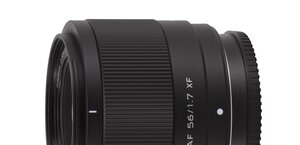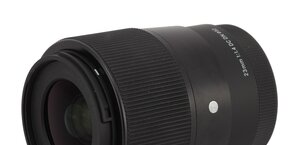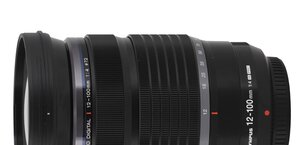Panasonic G X VARIO 35-100 mm f/2.8 P.O.I.S.
3. Build quality and image stabilization
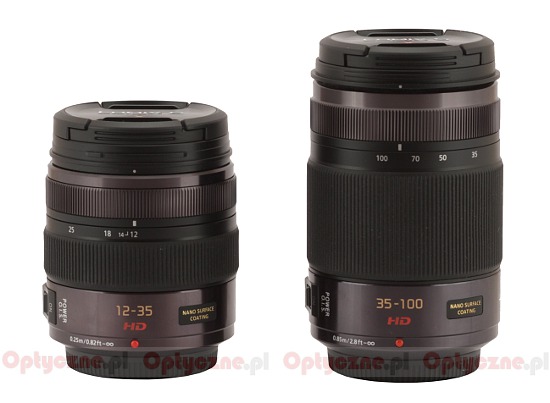 |
In the photo above the tested lens is positioned next to its 12-35 mm brother. As you see the thickness of both instruments is similar but the 35-100 mm model is noticeable longer. Contrary to its smaller sibling it doesn’t change its dimensions during focusing.
Please Support UsIf you enjoy our reviews and articles, and you want us to continue our work please, support our website by donating through PayPal. The funds are going to be used for paying our editorial team, renting servers, and equipping our testing studio; only that way we will be able to continue providing you interesting content for free. |
- - - - - - - - - - - - - - - - - - - - - - - - - - - - - - - - - - - - - - - - - - - - - - - -
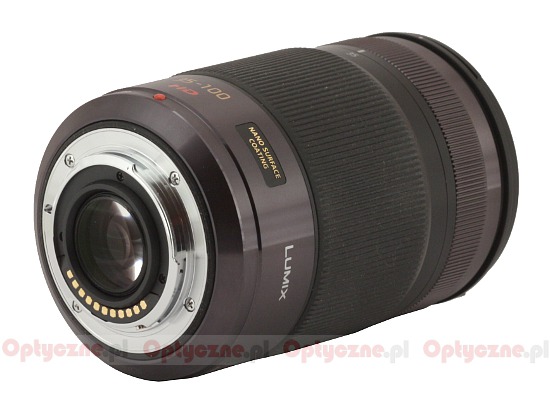 |
The tested lens starts with a metal mount which surrounds contacts and a rear, immobile element, 20 mm in diameter. From the side of the mount the lens remains completely sealed so no dirt can invade inside the construction.
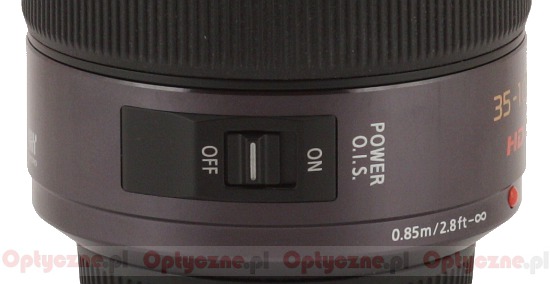 |
The proper body of the lens (made of metal like the mount) starts with a red dot which makes the alignment with a body easier. On the left side there is a distance range of the lens and above it two inscriptions “35-100” and “HD”. To the left of these inscriptions you can find an optical stabilization switch (POWER O.I.S. ON/OFF), and to the right another notice: “NANO SURFACE COATING”, meaning that the lens features special anti reflection coatings. On the other side of the lens you can find its serial number and also information that it was made...in China. It is very interesting because the 12-35 mm model, belonging to the same series, with an almost similar price tag and design, was made in Japan.
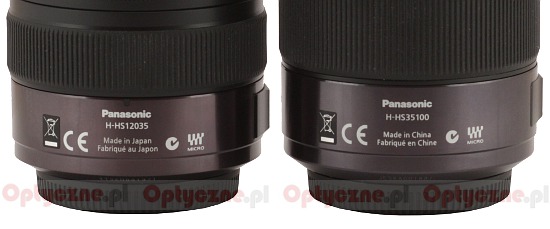 |
The next part of the casing is a zoom ring, 46 mm wide. Most of it is covered by rubber ribbing and next to the ribs there are focal lengths markings at 35, 40, 70 and 100 mm. The ribbing sticks to your fingers very well – you can even say too well because it also catches all the dirt. After just one day of usage it was simply caked with specks of dust.
Further on you can find a manual focus ring. What’s interesting, this time the ribbing was made of metal so there is no problem with dirt sticking to it. The ring is 18 mm wide and features electronic transmission; running through the whole distance scale needs a turn through about 270 degrees.
Immediately behind the manual focus ring there is a plastics hood thread. Contrary to the 12-35 mm model here the front element system doesn’t change its position while you set the focus. The lens construction is sealed and its dimensions remain the same. The front element is 38 mm in diameter and surrounded by another inscription with the name and parameters of the lens along with a non –rotating filter thread with a diameter of 58 mm.
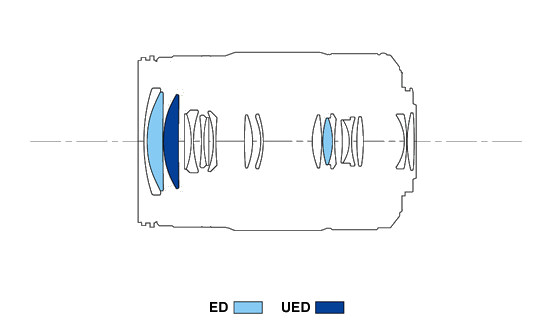
The optical construction of the Panasonic 35-100 mm consists of 18 elements positioned in 13 groups. As many as three low dispersion glass elements were used (one UED, two ED). Inside you can also find a circular aperture with seven blades which can be closed down to the value of f/22.
Buyers get both caps, a hood and a soft pouch in the box – we are really glad that here the producer didn’t try to spuriously save some money here.
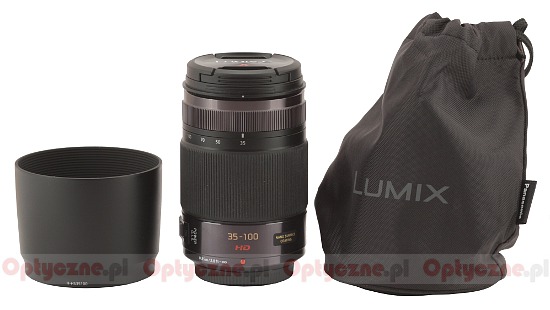 |
Optical stabilization
The efficiency of optical stabilization in the tested lens we checked by taking several dozen photos for every exposure time from 1/200 to 1/4 of a second with the stabilization switched on and off. Then we determined the percentage of blurred photos and presented it as a function graph depending on the exposure time expressed in EV (where 0 EV is an equivalent of 1/160 of a second). The result is presented below.
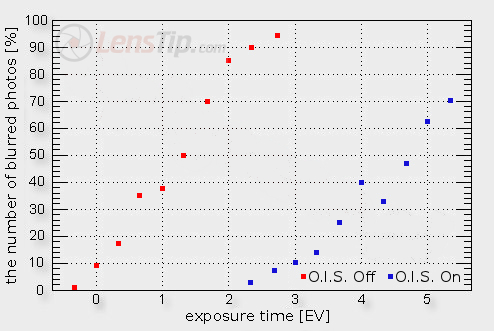
As you can notice the maximum distance between these two curves reaches 3.8 EV and such is the efficiency of the optical stabilization of the Panasonic 35-100 mm. It is a very good result, even a tad better than that of the 12-35 mm model.




